Underwater Dolphin Kicking: 5 Tips To Bolster Improvement
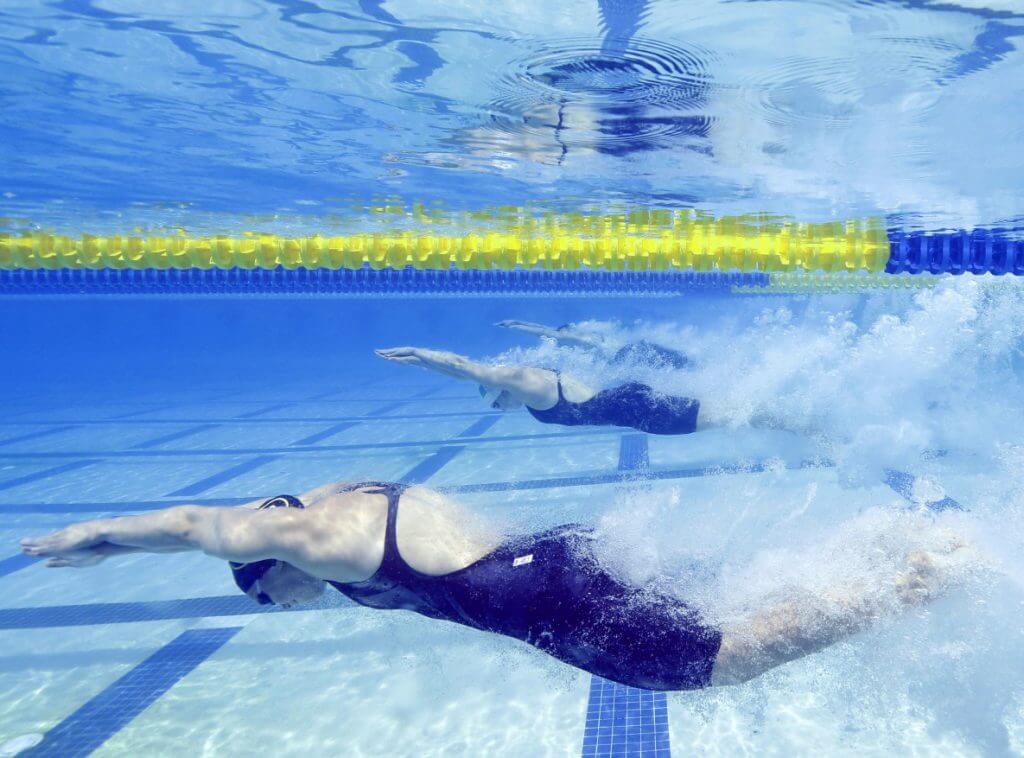
Underwater Dolphin Kicking: 5 Scientific Technique Tips
By Katie Wingert, Swimming World College Intern (From the Archive)
Swimmers and coaches alike love to talk about the importance of the fifth stroke: underwater dolphin kicking. But it can be overwhelming at times to understand just how to improve your underwater swimming skills.
Thankfully, scientific research has done much of the work for you, if you’re willing to look at it. Here are five ways you can improve your underwater swimming, according to research:
1. If you want to improve your underwater dolphin kick, improve your ankles.
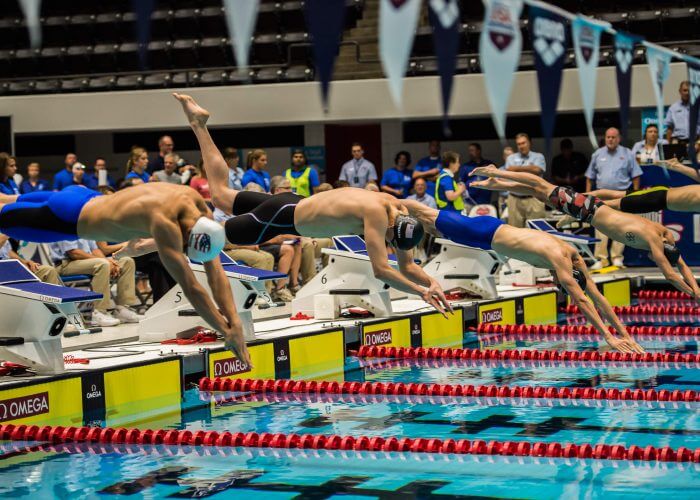
Photo Courtesy: Peter Bick
According to a study by Willems and others (2014), as swimmers improve their ankle strength and stability, their speed while doing underwater dolphin kicking will also improve. Although the swimming community loves to talk about ankle flexibility, current research does not demonstrate as strong of a correlation between ankle flexibility and underwater dolphin kicking as between ankle strength and underwater dolphin kicking.
What is clear, though, is that there is a close relationship between ankle stability and ankle flexibility. If the ankle is flexible and stable, then when the swimmer extends it, it will be strong and controllable. Thus, researchers suggest that swimmers can improve their underwater dolphin kicking through plantar flexion strengthening. That kind of strengthening is possible through the use of a resistance band, through exercises like calf raises, and through plyometric exercises that require you to use the balls of the feet.
2. Figure out what the perfect underwater dolphin kick frequency is for you.
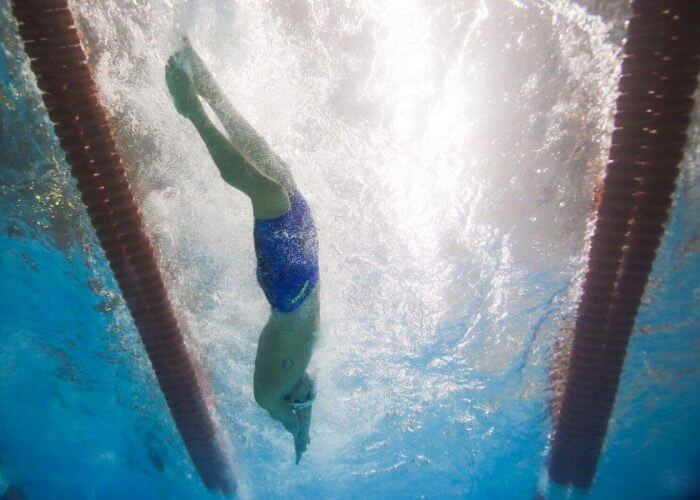
Photo Courtesy: Tennessee Athletics
A common misconception within the swimming community is that increasing the frequency of dolphin kicks will necessarily increase the speed of the swimmer underwater. In fact, research by Shimojo and others (2014) indicates that increasing the frequency of a dolphin kick does not always affect speed. Additionally, increasing the frequency of the kick decreases efficiency of the swimmer and causes them to lose energy. On the other hand, decreasing the frequency of a dolphin kick necessarily decreases the speed of the swimmer, and it improves efficiency and energy consumption.
The right answer, according to these researchers, is determining the ideal frequency of the dolphin kicking for each individual swimmer. How do you decide what frequency is right for you? Grab a tempo trainer and a coach with a stopwatch. Mark a spot on the bottom with a cone (like 15 meters) and test out different rhythms. The timer on deck can figure out which tempo gets you to the mark the fastest.
3. Work on the upbeat of the underwater dolphin kick.
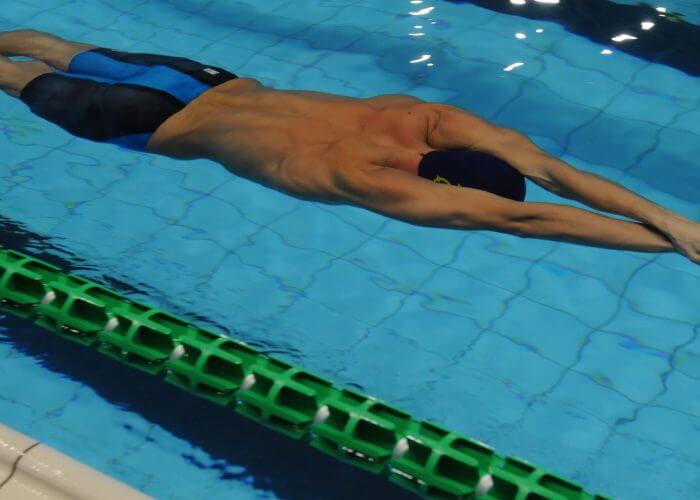
Photo Courtesy: Irsara Daniele/Bolzano Swim Meet
Research by Atkinson and others (2014) reveals that swimmers who are faster at underwater kicking are more likely to spend equal amount of times performing both the downbeat and the upbeat of the dolphin kick, as opposed to weaker swimmers, who generally spend too much time on the upbeat and lose speed. Additionally, the fastest underwater swimmers quickly shift kick phases; after achieving the upbeat, they swiftly begin bringing their toes down into the downbeat.
4. Know when to start kicking.
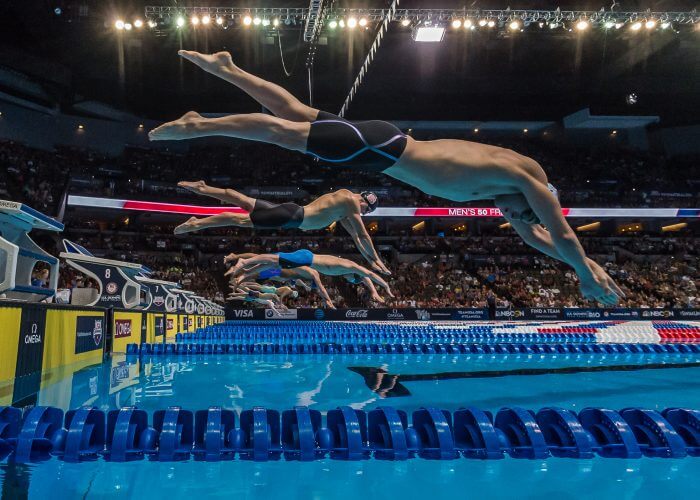
Photo Courtesy: Peter H. Bick
Houel and others (2014) suggest that one of the most important factors of successful underwaters is that swimmers begin the process in a tight streamline and begin kicking at the right time. For elite swimmers coming off of a start, research suggests that six meters is the magic moment to begin the dolphin kick sequence. Although that number may seem high, a quick review of some of Michael Phelps‘ most famous races reveals the accuracy of this number. Shorter swimmers may have to adjust, but ultimately, the goal should be to start dolphin kicking so as to maintain efficiency and momentum.
5. Coordinate your hip and ankle movement.
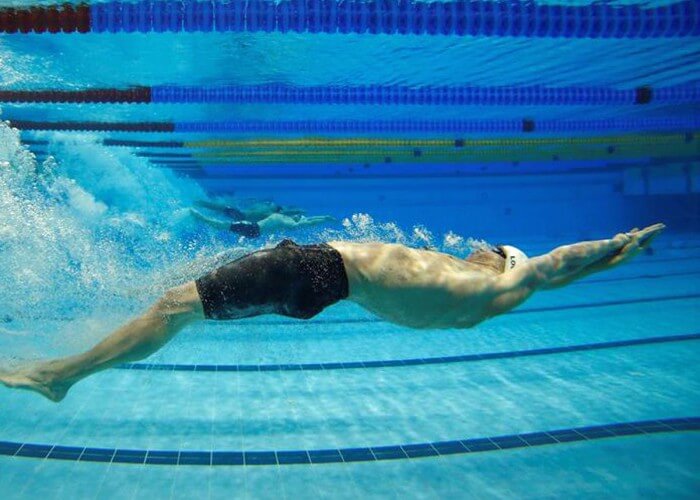
Photo Courtesy: FINA Doha 2014
Coaches often talk about the importance of the hip initiating underwater dolphin kicking, but research by Elipot and others (2010) gives more reasoning behind that idea. These researchers suggest that the most elite swimmers manage to carefully coordinate their hip and ankle movements. If the hip and ankle are working in conjunction, with the hip movement motivating the ankle snap, then the underwater kick will be efficient and speedy. Swimmers can practice this kind of coordination through the use of a tempo trainer and through body dolphin drills.
All swimming and dryland training and instruction should be performed under the supervision of a qualified coach or instructor, and in circumstances that ensure the safety of participants.




Harvey Mcgreavy-gill Joe Stott
Brylee Weaver
Lilly
Gary Peach
That’s awesome.
Lilly Makovsky
Helena Blumenau
Colleen Bernard
Dan Wilhelm, Ron Rasque, Gretchen Benjamin, Shelly Sabourin, Dawn Mihalovic-Bayer, Amanda Anne Katsma, Amanda Manock, LeeAnne Thorson Schwan, Susan McNamee, Pamela Batungbacal, Kitty Clark Cole
Jackson Penner Dain Vallie
My nephew is an excellent butterflyer both in the 100@200 M
He is 12 years old. His best time so far is 1:05 in the 100fly. ( long course meters).. any suggestions on what brand of technical swimsuit I buy for him?
Haha Francis Schmitz. I can’t dolphin at all!! ?
I don’t either, but I know I fight the clock a lot & dolphin will cut time because your faster. We can learn something new every day. We still got a lot of pool time in our life.
I dont fight the clock swimming. I fight it biking and running! Lol!!
Дина Жамантаева
Yasmin Thomeo
Vou ver!
Brittany Archer
Tommy Lutter
Underwater dolphin is much more efficient, and faster, with arms by the side. That way, the head is free to initiate the dolphin action and pass the undulation the length of the body. Imagine a real dolphin trying to swim well with 2 long limbs sticking out in front of it. The dolphin thrust begins with the head, so the head must be free to move up & down. Furthermore, with arms by the side, the hands, held parallel to the feet, can be used as fins for additional thrust and to enhance the body flow.
Danny Moon Shea Huntington
Asser Mamdouh
Tallulah Chesworth
Lucy French
Josien Ronald
Sarah Aksamit Interesting!
Hajime Hinata
It sounds so easy, doesn’t it?…no seriously, you guys got this!
Charlie Hopkin
DF
Solid advice, thank you!
Jonathan James Declan James
Lacey Lorraine Radloff interesting read.
Paige Bower
Jaidyn Hamilton
I’ve used monofins to help.
Hester Snyman
I’ve used monofins. Works great. Misty Hyman trained with the monofin on a daily basis.
Add a monofin to help with all 5!